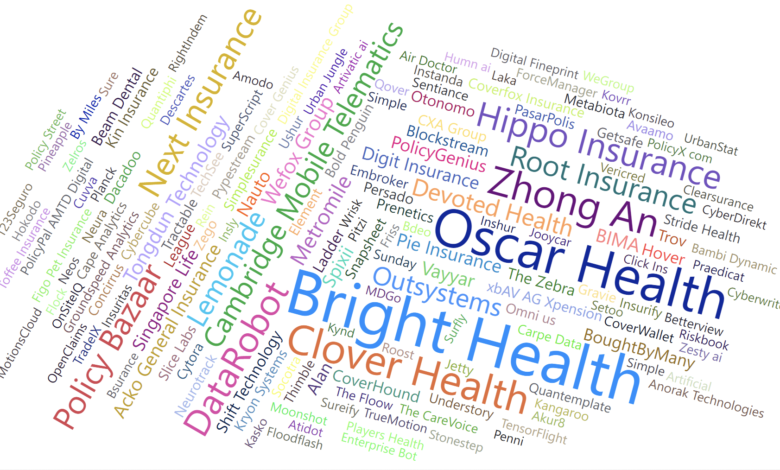
The insurance industry is swamped in new start-ups all promising to answer the industry’s problems using their specific brand of AI, but as we know from the past, the hype cycle is once again in full motion! Let’s not forget the past AI Winters where the reality fell far short of business expectation.
AI has become a buzz word to access capital investment often with little focus on the underlying technology.
As with all hype bubbles, we can also now see organisations using the term AI as a lever to increase their funding. A report by MMC, a London based venture capital firm, found that 40% of European companies that classified themselves as ‘AI start-ups’ did not use the technology in any meaningful way. An IDC survey also found most organisation encountered some failures with AI projects with 25% reporting as much as a 50% failure rate. This was mostly related to poor input datasets, unrealistic expectations of what the algorithms can achieve and insufficient integration into business processes to ensure the AI is audited, checked and where necessary validated by humans.
The difference this time? We are starting to see AI solutions, bear fruit in the market.
COVID-19 has accelerated digital change, with last year seeing record investment in the sector.
As we continue in the grips of COVID-19, digital is yet again thrust to the fore and presents an opportunity for the industry to make that much anticipated step change. The recent Willis Re 2021 Insurtech report showed a record year of capital investment into new start-ups with global investment reaching $7.1bn up 12% from the previous year.
We are seeing a plethora of use cases being prototyped in the industry, but it will take time to yield results as business models adapt.
Entering this next phase of AI and Insurance, we are beginning to see viable, partial, AI based solutions to today’s business problems, but they require broader acceptance, refinement and integration.
Here are some of the examples, we at Insure-Pro, have been following:
Chatbots: Over 50% of enterprise companies are predicted to spend more money on chatbot development than on mobile app creation in 2021. (Gartner). The technology is still at a nascent stage, however, even now, Chatbots can replace simple repetitive rule-based tasks in sales and service organisations.
- Babylon, the health insurance start-up launched a Covid-19 Mobile Care Assistant to assess if you are at risk acting as a triage service with practitioners.
- Woebot, designed by Stanford psychologists is a mental health bot that can help patients nurture positive thoughts and act as a first responder. ChatBots and Covid 19.
Guided Advice: The lack of advice in global markets has led to underinsurance in consumer driven products, AI guided advice models provide an opportunity for the industry to plug this gap. The use of AI ‘bots’ to guide customers to the most relevant products can increase sales conversions and overall customer satisfaction.
- Zelros are using AI and Data Analytics to improve sales advice for their clients, an area that to date has been difficult to penetrate due to the high cost of advice.
Underwriters Workbench –According to a McKinsey. study 30-40% of underwriters’ time is still spent on administrative tasks such as getting submission data and entering information into systems.
- Cytora, are one of many players offering underwriters an AI based engine allowing them to match, complete missing data and prioritise submissions that fit their risk profile for underwriting review.
Fraud Detection – Data from the ABI shows the increasing frequency of fraudulent claims costing the UK insurance industry £1.2bn in 2019. AI driven predictive models can be used to detect fraudulent patterns, quickly learning from millions of historical data points. Not only does this improve detection rates reducing overall loss ratios, but also enhances customer satisfaction scores by reducing the time taken to process claims assessments.
- Friss are one of the world leaders in this space with upwards of 175 implementations and 130m screenings a year.
Data Ingestion – A large percentage of data available to insurers is in unstructured formats residing in emails, paper files and messages.The ability to take unstructured data from different sources and convert into structured data that can be used across the insurance value chain is important, not least to power the AI tools themselves.
- AntWorks with its integrated automation platform has been helping insurers to convert unstructured data to structured data across underwriting and claims. This provides a wealth of data points enhancing decision making across the value chain.
Climate Sensors – According to Sigma, in 2019, economic losses from natural and manmade disasters totalled $146bn with the current insurance industry covering just $60bn of that. We have seen several entrants in the Data & AI sector leveraging sensor technology to predict natural disasters, providing the metrics required to build new insurance solutions for the sector.
- Understory has developed its sensor technology and AI powered weather models to predict weather risk profiles.
- VanderSat has been working with Swiss Re to extend crop insurance in emerging markets using their rainfall monitoring technologies.
What we often see today, are point solutions that address one specific need. It is encouraging to see the industry collaboration gathering pace in 2021 to build more integrated solutions. This will be critical for the successful adoption of AI: – we need all parties – insurers, brokers, data companies, technology providers – working together to brainstorm and create insurance focused solutions that will drive the industry.



